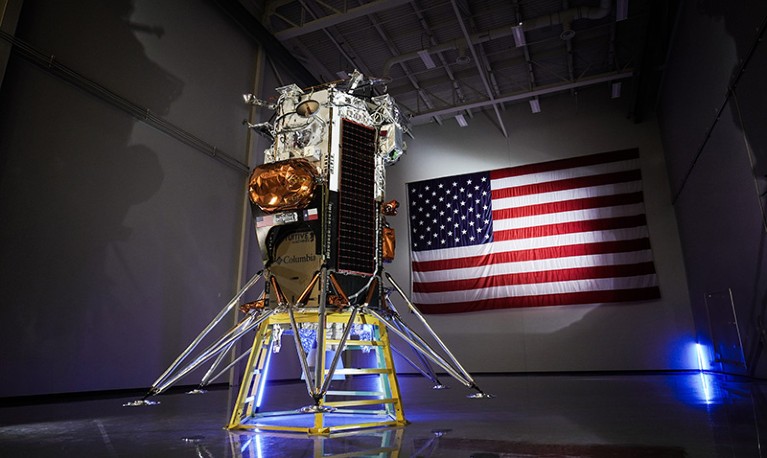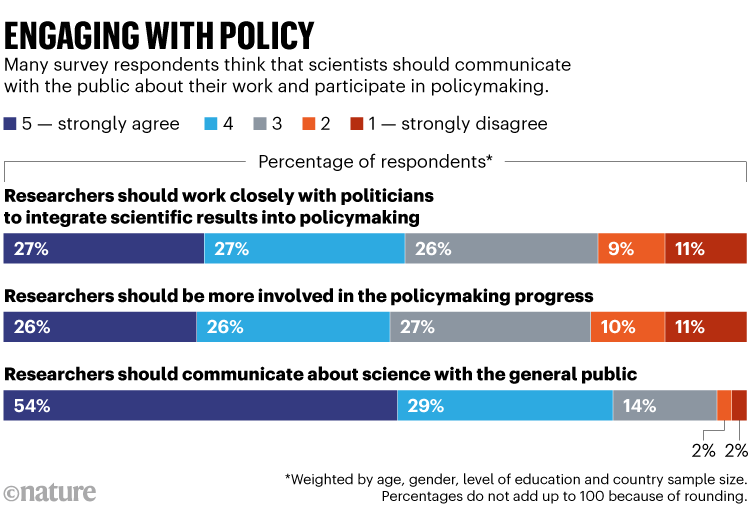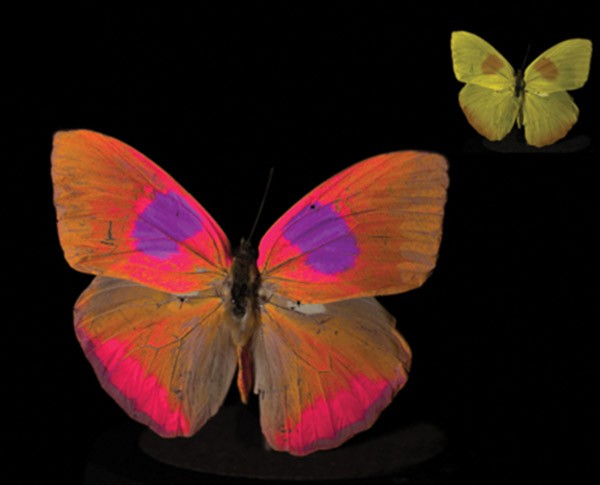Hello Nature readers, would you like to get this Briefing in your inbox free every day? Sign up here.

The company Intuitive Machines in Houston, Texas, will try to land its Odysseus spacecraft near the lunar south pole this month.Credit: Intuitive Machines
The small US company Intuitive Machines could soon put the first private spacecraft on the Moon. NASA has pinned some of its hopes for lunar exploration on outsourcing the delivery of scientific equipment to private companies, and after an attempt by another US firm failed last month, anticipation — and anxiety — is spiking for this new effort. “We’re going to get there, with smaller and newer companies building US spacecraft,” says mechanical engineer Christopher Dreyer. But “they’re going to make mistakes, and I don’t know how many failures we can tolerate”.
Nature | 5 min read
Scientists in Indonesia are hopeful that the presidential election there will increase research spending — no matter who wins. The result was still unclear as this newsletter was being finalized, but all three candidates have promised to increase funding, to between 0.4% and 2% of GDP. In 2020, research and development spending stood at just 0.28% of GDP. Some Indonesian researchers remain sceptical and are calling for an overhaul of the country’s science super-agency, which they say has made research more unwieldy.
Nature | 5 min read
People worldwide have high levels of trust in scientists, according to a survey of more than 71,000 individuals in 67 countries. The average trust score was 3.62 out of 5, with larger numbers indicating higher trust. Participants from Egypt, India and Nigeria have the most trust in scientists; in Albania, Kazakhstan and Bolivia, people have the least trust. Globally, people with a ‘left-leaning’ political orientation have higher levels of trust, but this association doesn’t always hold true at the country level. More than half of the respondents wanted researchers to get more involved in policy-making. “These results are intuitive — if people trust scientists, they will want them to be involved,” says psychologist James Liu.
Nature | 5 min read
Reference: OSF Preprints study (not peer reviewed)

Source: Ref. 1Source: Ref 1.
Features & opinion
Conservationist Kumar Paudel embarked on a five-year legal battle to advocate for equitable enforcement of wildlife laws. Having done extensive interviews with people who had been incarcerated for poaching, he was shocked to see a politician display a tiger pelt during a TV interview — with no consequences. “The disparity struck me,” he says. Despite threats from an official, Paudel filed a petition with Nepal’s highest court. Eventually, the government had to acknowledge its failure to keep records of who legally owns parts of endangered species. “The court order brings thousands of illegal wildlife parts under enforcement, regardless of who owns them,” Paudel says.
Nature | 6 min read
Researchers are blasting patients’ cancer cells with dozens of drugs in the lab to see what sticks. Personalized drug screening results in treatments that offer longer remission periods than standard therapies, and it could work for more cancers than genome-guided approaches. “This is a revolution,” says cancer biologist Christopher Kemp. To reduce the time and cost of growing cancer cells outside the body, researchers are trying wildly differing methods, including cultivating cancer cells in chicken-embryos ‘avatars’ or in miniaturized model organs.
Nature | 13 min read
Researchers are analysing environmental DNA (eDNA) — fragments of genetic material in soil, water, air and even ice cores — to uncover ancient ecosystems or track elusive animals. Leeches, for example, carry the DNA of the animals they interacted with in their stomach contents, explains biologist Elizabeth Clare. “It’s a lot easier to collect 1,000 leeches than it is to find the animals” that the leeches feed on, she says. “It’s like having a bunch of field assistants out surveying for you.” Now, scientists are grappling with how to ensure that eDNA results are actually true without having to go back to traditional field methods. “It is very hard to validate some of these scenarios,” says molecular biologist Mehrdad Hajibabaei. “And that’s basically the nature of the beast.”
Undark | 16 min read
Image of the week

Vasas V, Lowell MC, Villa J, Jamison QD, Siegle AG, Katta PKR et al./PLoS Biol (CC0 1.0)
This is what an orange-barred sulphur (Phoebis philea) looks like to bees, birds, reindeer, mice and other animals that can see ultraviolet light. Researchers have created a camera system and software package that allows us to see the world in animal-view colours. “We went outdoors to film the birds in the trees, and only then it sunk in how bright the skies are in UV colours,” says ecologist and study co-author Vera Vasas. “The sky is a different colour to most of the animals than it is to us.” (New Scientist | 3 min read)
Reference: PLOS Biology paper
